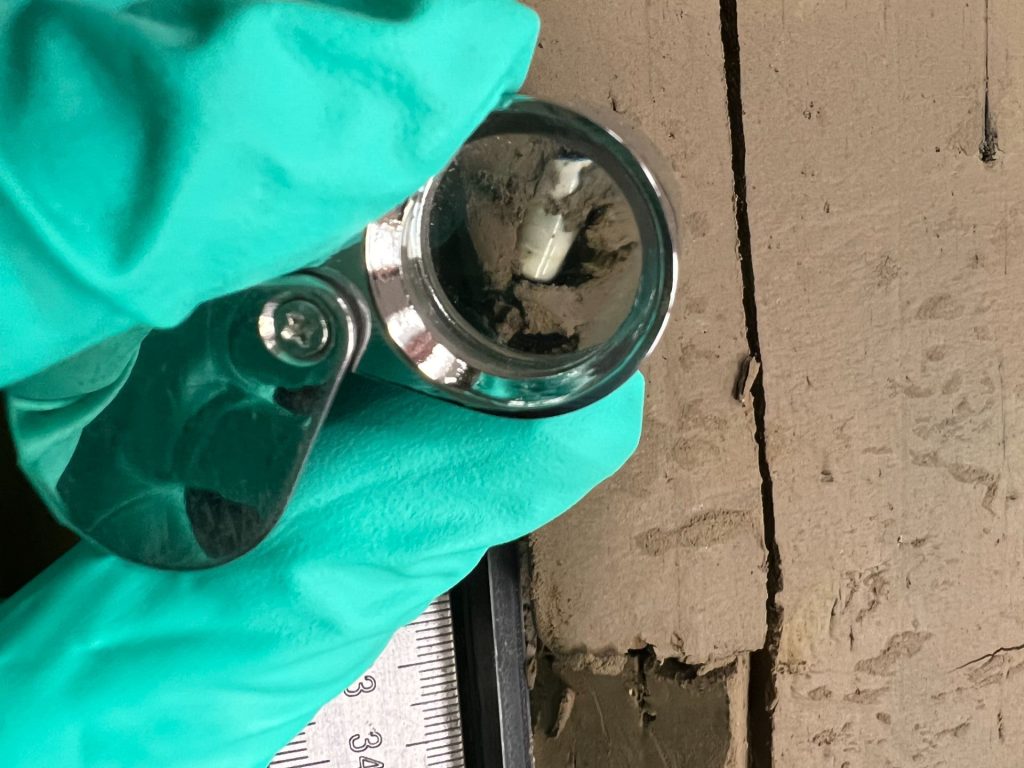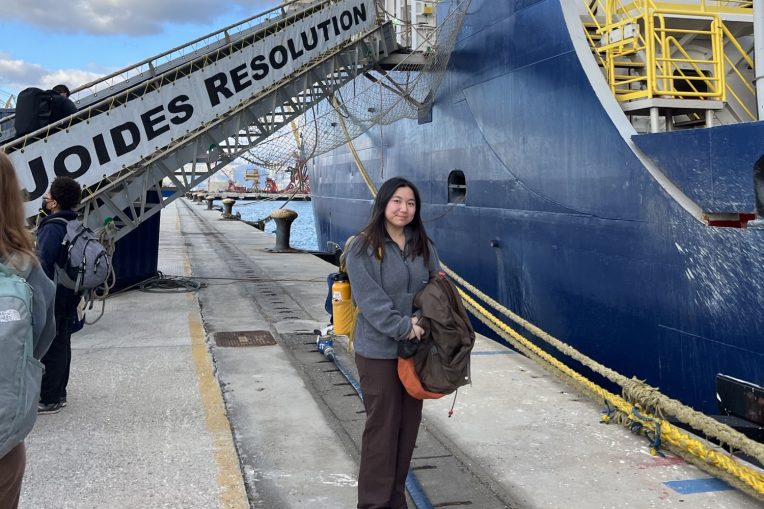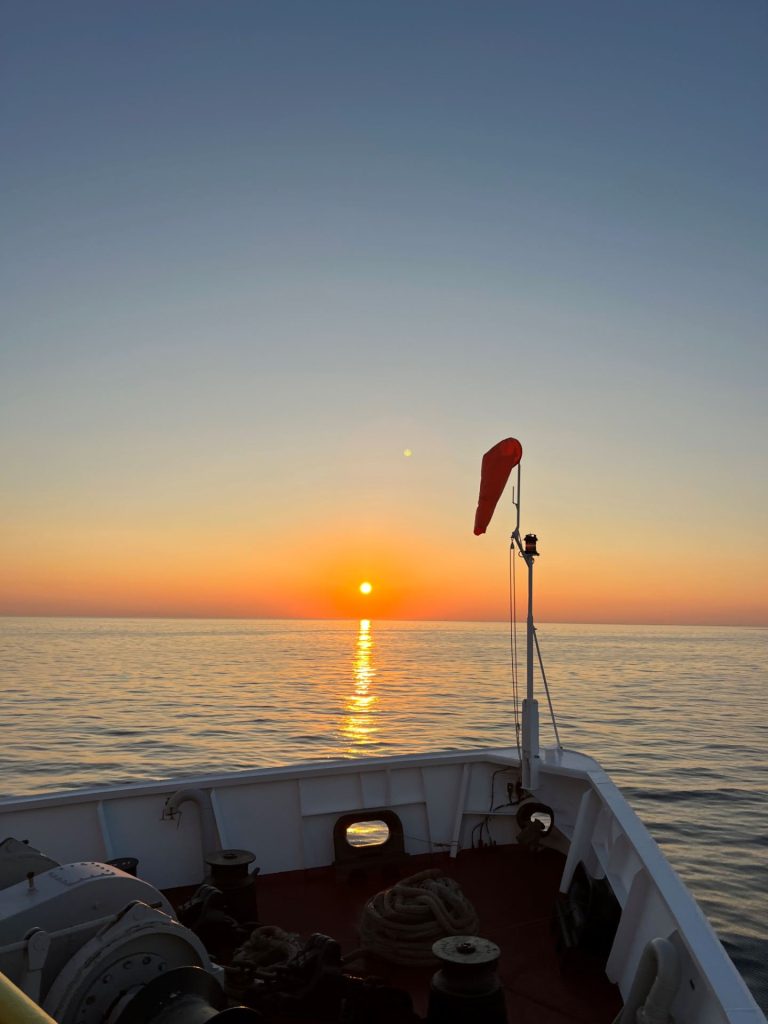Like time capsules buried deep beneath the ocean floor, ancient sediment and rock contain fossilized remains of plants and animals that lived tens of millions of years ago.
To extract this geological history, scientists use massive, oceangoing research vessels to drill core samples, providing a glimpse into the Earth’s development.

Illinois State University sophomore geology major Ruby Garey was one of 15 undergraduate students from across the country selected to live, learn, and work aboard such a vessel, the Joides Resolution (JR), on a 10-day voyage in February from Heraklion, Greece, to Tarragona, Spain. During her journey across the Mediterranean Sea as a member of the JR Academy, Garey was immersed in scientific ocean drilling and the geoscience careers it involves.
“It was an amazing experience,” Garey said. Each morning she set an early alarm to watch the sun rise across the JR’s stern. After breakfast, she and her academy colleagues engaged in classes presented by instructors from the International Ocean Discovery Program, NASA, Texas A&M University, Columbia University, and the University of California Museum of Paleontology.
Lectures about the Mediterranean were occasionally interrupted by sea life sightings—in the Mediterranean.
“You would look out the window and see a pod of dolphins,” Garey said. “Then, everyone would rush over to see them. We got to see a lot of marine life—like dolphins, a bioluminescent jellyfish, a swordfish, and at one point, I even saw a sea gull on a sea turtle floating through the ocean.”

Garey and her colleagues also worked in the JR’s large onboard laboratory, alongside JR geoscientists and technicians. Wearing gloves and safety glasses, they cut and analyzed core samples extracted by the vessel’s 62-meter-tall derrick equipped with a drilling string capable of reaching six miles beneath the ocean’s surface.
“That was the coolest thing—all of the hands-on stuff that I did in the lab, from looking at and sorting out these nano fossils through a microscope to just figuring out where I wanted to take a core sample and take some of the sediment from that sample and analyze it,” Garey said. “That definitely solidified a career in geology for me.”
Core samples from the Mediterranean provide evidence that the sea was once a desert, about 5 and a half million years ago. By studying core samples, scientists observe what organisms lived on our planet—and what types of climates they lived in—at different times throughout the Earth’s history.
“It’s important for understanding how our world works,” Garey said. “It’s finding out, ‘What was the environment and the climate like at the time of those samples?’ It’s understanding how our world is and how we got to this point in time.”
In the evening, Garey and her colleagues pushed through a strong headwind to the front of the JR’s deck where they watched the sun set across the vessel’s bow into the glistening Mediterranean Sea ahead. At night, before bed, they watched the stars overhead.
“I like to say that Orion and the Little Dipper (constellations) were my friends the entire time,” Garey said. “They were so crystal clear.”
After disembarking the JR, Garey and her academy colleagues spent the remaining days of their trip exploring Spain.
“The food in Spain was delicious, and I really bonded with everybody on the trip,” Garey said. “We were all on this experience together, and it was fun being able to experience a new country that we had all never been to.”

Garey has since returned to campus where she has reunited with her community of Illinois State geology and earth sciences students who “feel like family.”
“We get to have these great experiences and do a lot of field work,” Garey said. She added that she is grateful to Dr. Tenley Banik, an associate professor in the Department of Geography, Geology, and the Environment, for encouraging her to apply for the National Science Foundation-funded JR Academy.
“As a sophomore, I never thought that I’d get that opportunity,” Garey said. “But, I was able to go on the trip and get that experience.”
Garey, who could see herself pursuing a career in hydrogeology, said she is eager to return to the field.
“Through our program, we get to travel and get these experiences,” Garey said. “It’s what drew me into geology. It’s my way to go. It’s my future.”


